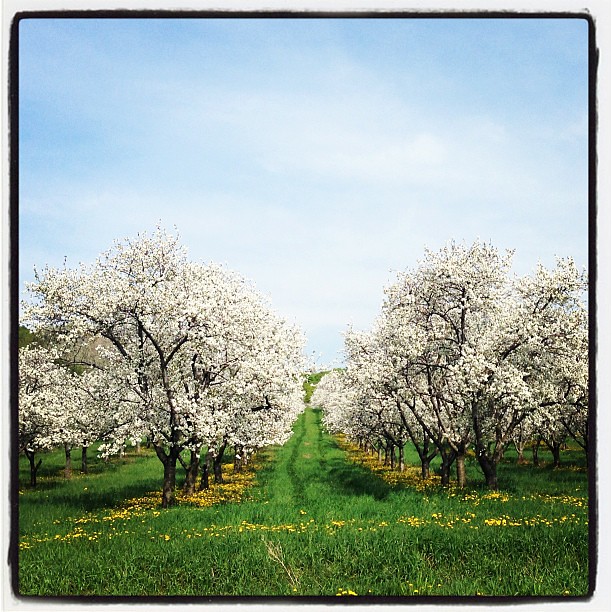Tart cherries – or, as we say in Germany, Sauerkirschen – have been a steadfast presence during my childhood, featured in cakes, desserts and on my grandparents’ trees. In Canada, Sauerkirschen preserves were one of the things my family would splurge on in La Vieille Europe, the Old Continent specialty store that also imported delicacies like Leberwurst and real German pickles. Thus, I was fascinated when this morning while making breakfast I discovered that tart cherries are grown in the US, and that they are currently in the process of a revival.

Image by Andrew MacFarlane, via Flickr CC.
The story was featured on NPR news, and first explained that tart cherries are being hailed as a new ‘superfood‘, with studies showing they contain anti-inflammatory phytonutrients that can help to reduce insomnia or joint and muscle pains (as an aside, it notes that many of these studies are paid for by the Cherry Marketing Institute. Coincidence?)
The reporter then interviewed Mike Van Agtmael, a cherry farmer in Michigan. This farmer was head over heels for growing tart cherries, “even in years like the last one”, in which an unseasonably warm early spring followed by one single night of frost ruined his entire crop – the warm temperatures had led the trees to bloom early, and the blossoms are extremely sensitive to frost, dying off if the thermometer drops below 0 degrees C.
Occurrences like these further highlight the danger of planting one single variety of a fruit – in this case, a variety called Montmorency, which is America’s primary commercial tart cherry variety -, especially as our weather patterns become more erratic and unpredictable. Since Van Agtmael’s orchard was exclusively composed of Montmorency trees, they all responded to the early spring in the same way, by blooming, and thus were all affected by the frost the same way.
Amy Iezzoni, from Michigan State University, tries to change that: She is the only tart cherry breeder in the country. When she started her job in 1981, the Montmorency variety was all she could find, and she grew more and more desperate to find more genetic varieties that she could cross it with. Since the tart cherry originated in Eastern Europe, eventually she got permission to cross the Iron Curtain and travel from Yugoslavia over Hungary to Poland in the midst of the Cold War to collect tart cherry varieties (I found this fascinating in itself).
Now, her 30-year old orchard has a vast diversity of plants, including one that wasn’t affected by the frost last year because it blooms much later than the Montmorency variety (it’s called Tamaris, and Iezzoni got it from Russia). She is currently trying to cross this resilient, but not very tasty cherry with others that yield better fruit in order to get the benefits from both varieties. And that is the purpose of biological diversity – you never know what quirks might become relevant in the future, and might just be the saving grace of an entire fruit crop.
Now, anybody in the mood for some cherry pie?
If you want to listen to the podcast, you can find it here!